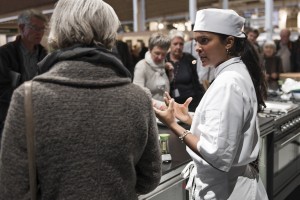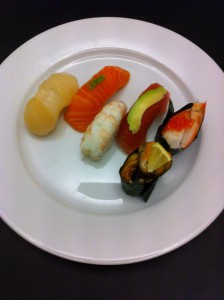
For that I have to say both Yes and No.
It depends a lot on how it is used in sushi.
You have to think that seafood has a completely different texture than fish. Most fish fillets are quite firm in the meat.
If you look entirely at seafood they remind you most about a bag of mixed candy. Seafood comes in many different sizes, tastes and texture. It is the raw material that is the hardest to use for sushi.
Some seafood used in sushi restaurants outside Europe are very difficult to prepare for sushi, it requires you as a sushi chef to use many different Japanese cooking techniques.
The consistency of seafood is also very different. Some shellfish have a very hard surface while others are very soft. In order for this type of raw material to become a gastronomic experience, you need to know which Japanese cooking techniques are best suited to it.
At the Sushi course for beginners the attendance learns to prepare the most sought after raw materials for sushi.
_
Zoë has held sushi courses and cooking classes for A. P. Moller – Maersk, Hugo Boss Nordic, Novo Nordisk, Novartis, Velux, Gorrissen Federspiel, Beierholm revision, Elbek & Vejrup and many more.









